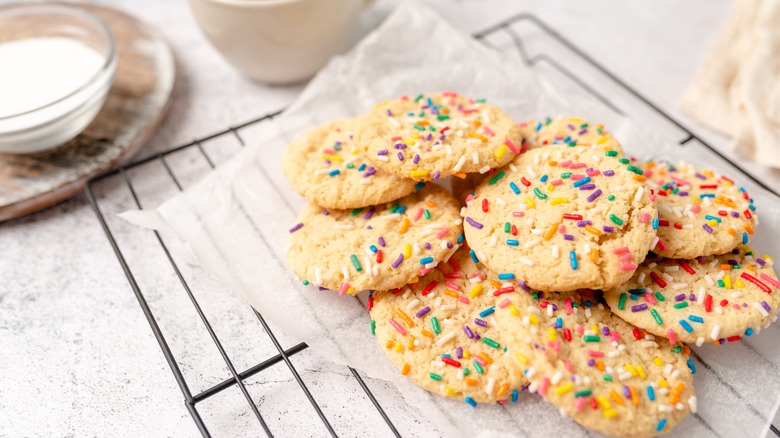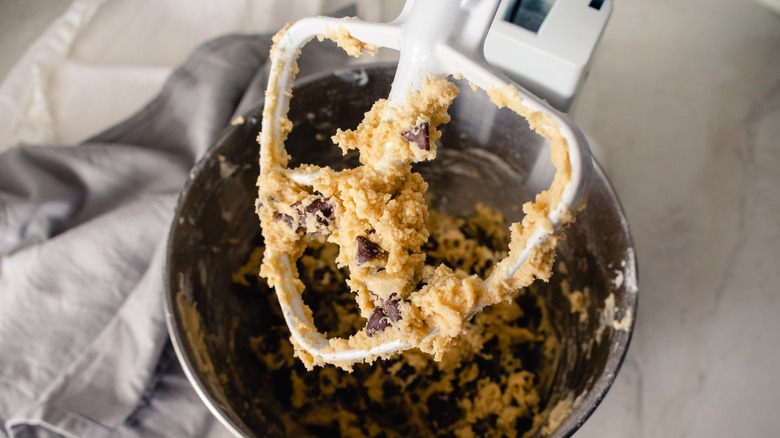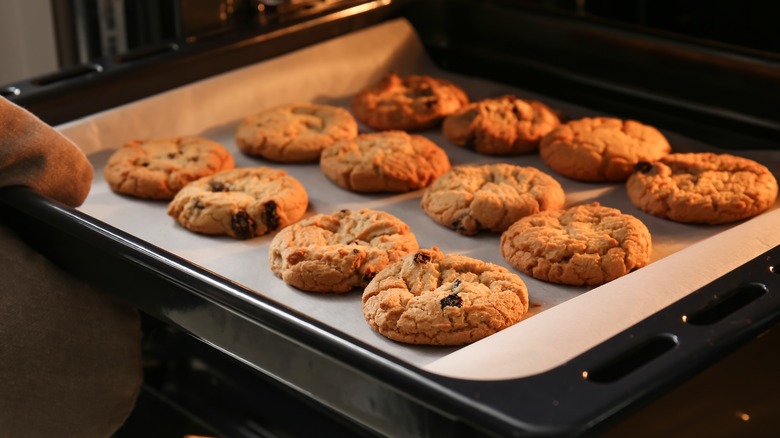Your Cookies Might Need A Bit More Flour Than The Recipe Says
You may have heard of measuring with your heart, but while this is an approach that works perfectly fine when adding garlic to pasta, or chocolate chips to pancakes, it doesn't always bode well with every ingredient. When it comes to cookies, for example, the ratio of butter, sugar, eggs, and flour directly influences the texture and taste of the delicious treat. And if you stray from what the recipe calls for — especially if it involves flour — you could end up with a very different result.
According to Land O'Lakes, flour is responsible for one of the main chemical reactions that occur when a cookie comes together. It forms a network of gluten strands that traps the gasses produced by the baking soda. While the protein in the gluten is what gives cookies their texture, the network it forms is what allows cookies to effectively rise. When you alter the amount of flour in a recipe, therefore, you change how soft or tough the cookies turn out.
What happens when you add extra flour to cookie dough
If your cookies are coming out looking flatter than you'd like, a little extra flour goes a long way. As Baking Kneads explains, flour not only prevents cookies from spreading too much, but it also gives them height. That's because, in addition to forming a gluten web that allows the baking soda to do its job, flour itself is also a leavening agent. Even if your cookies aren't turning out flat, however, more flour can still be beneficial.
Per Food & Wine, the more flour you use, the denser the consistency will be. Instead of a cookie that is soft or bread-like, you'll end up with one that is firm yet tender and chewy, similar to that of a brownie. If that's the type of texture you want your cookies to have, you'll simply need to be a bit more generous with the flour next time you make a batch.
How much extra flour should you add to cookie dough
Of course, on the other hand, extra flour in cookies won't yield better results if you go overboard, so it's important to only add what you need. Though flour creates the gluten essential in providing structure to cookies, too much of it can quickly make your baked goods from perfectly dense to hard as a rock, Land O'Lakes points out.
For the best results, Baking Kneads recommends adding one to two tablespoons at a time, or a quarter cup for every two cups of flour (via Food & Wine). If you're not sure how much or how little your recipe needs, Sugar Kissed suggests using the tackiness of the dough as an indicator. When it's still tacky but not sticky, you'll want to stop adding flour.
Add flour beyond this point and your cookie won't cook properly. In addition to having a much tougher texture, Baking is a Science shares that because flour prevents spreading, the bottom will burn before the middle has a chance to fully cook through. But as long as you add the flour little by little and pay attention to the consistency of the dough, it's an easy way to upgrade your cookies.


